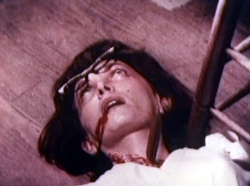
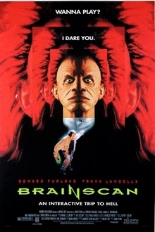 While minding his own business, peeping on the mostly willing girl across the street, young Mike (Edward Furlong) gets a call from his generic horndog buddy — probably named Doozer or something equally dumb — telling him about this great new video game he’s reading about in the latest issue of Fangoria, because every little bit helps, right guys?
While minding his own business, peeping on the mostly willing girl across the street, young Mike (Edward Furlong) gets a call from his generic horndog buddy — probably named Doozer or something equally dumb — telling him about this great new video game he’s reading about in the latest issue of Fangoria, because every little bit helps, right guys?
The video game is called Brainscan and it promises to be the most immersive experience in horror gaming on your 16 32 64-bit system and, at the very least, it’ll let Frank Langella enter your subconscious, as he is wont to do. Mike plays the game and finds himself in a first-person world of murder and madness as whomever he kills in the game, is found dead in real life. Bummer, dude.
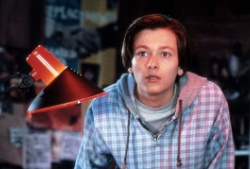 Beyond the silliness of the game itself, the movie Brainscan goes one better by introducing the wholly grating boogeyman known as the Trickster, a horrific sprite from the video game world (?) here to convince Mike to kill himself while eating all of his well-stocked stash of junk food. With a stretched-out face and a shocking-red faux-hawk, it’s very easy to see why T. Ryder Smith isn’t at very many horror conventions signing copies of the movie poster handed to him by pudgy Trickster clones.
Beyond the silliness of the game itself, the movie Brainscan goes one better by introducing the wholly grating boogeyman known as the Trickster, a horrific sprite from the video game world (?) here to convince Mike to kill himself while eating all of his well-stocked stash of junk food. With a stretched-out face and a shocking-red faux-hawk, it’s very easy to see why T. Ryder Smith isn’t at very many horror conventions signing copies of the movie poster handed to him by pudgy Trickster clones.
Although many of you younglings might not remember it, Brainscan comes from a time long ago and far away when Furlong was the affable-enough boy-king of the first-run genre picture, riding somewhat high after Terminator 2: Judgment Day. But, sadly, too many silly scripts like Pet Sematary Two and this techno-trash caused his star to extinguish faster than a cigarette under Furlong’s well-worn Doc Martens boot heel.
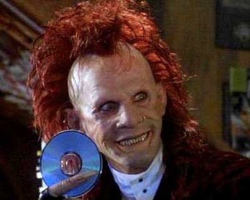 Even worse, by the time this picture was out in theaters, the technology was already practically outdated, no matter how many cool-ish gadgets and Aerosmith posters director John Flynn (Rolling Thunder) threw on the screen. And even though the CGI was getting technically better, the actualized concept of virtual reality and cyberspace were still the thing of badly rendered William Gibson novels and horribly cartoonish Thomas Dolby screensavers.
Even worse, by the time this picture was out in theaters, the technology was already practically outdated, no matter how many cool-ish gadgets and Aerosmith posters director John Flynn (Rolling Thunder) threw on the screen. And even though the CGI was getting technically better, the actualized concept of virtual reality and cyberspace were still the thing of badly rendered William Gibson novels and horribly cartoonish Thomas Dolby screensavers.
Despite those winning attributes, realistically Brainscan isn’t even nostalgically good for the time, leading most viewers to check their futuristic Apple Watches and Fitbits to see how much time is left on the thing. To be fair, however, this flick does make a rather unwatchable double feature with Lawnmower Man 2: Jobe’s War if you truly hate yourself.
Or you can just take a nap. Whatever. —Louis Fowler





 Based on a story and screenplay by action star, martial artist and Tostitos spokesperson Jean-Claude Van Damme,
Based on a story and screenplay by action star, martial artist and Tostitos spokesperson Jean-Claude Van Damme, 
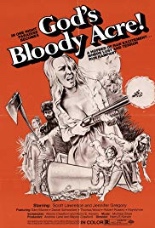
 Deep within the Grand National Forest live – well, for the time being – three redneck brothers:
Deep within the Grand National Forest live – well, for the time being – three redneck brothers: 
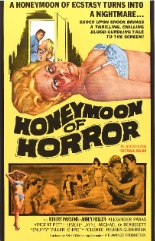
 After a whirlwind meeting-cum-courtship, blonde beaut Lilli (Abbey Heller) marries curiously mustachioed sculptor Emile Duvre (Robert Parsons), then goes straight from exchanging vows to embarking on a
After a whirlwind meeting-cum-courtship, blonde beaut Lilli (Abbey Heller) marries curiously mustachioed sculptor Emile Duvre (Robert Parsons), then goes straight from exchanging vows to embarking on a 